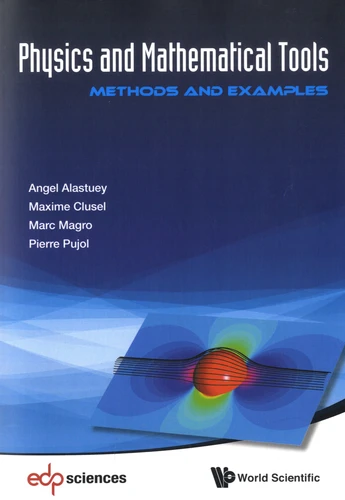Physics And Mathematical Tools. Methods And Examples
Par : , , ,Formats :
- Paiement en ligne :
- Livraison à domicile ou en point Mondial Relay indisponible
- Retrait Click and Collect en magasin gratuit
- Réservation en ligne avec paiement en magasin :
- Indisponible pour réserver et payer en magasin
- Nombre de pages342
- PrésentationBroché
- FormatGrand Format
- Poids0.62 kg
- Dimensions17,0 cm × 24,5 cm × 2,0 cm
- ISBN978-981-4713-24-5
- EAN9789814713245
- Date de parution01/01/2016
- ÉditeurWorld Scientific Publishing
Résumé
This book presents mathematical methods and tools which are useful for physicists and engineers : response functions, Kramers-Kronig relations, Green's functions, saddle point approximation. The derivations emphasize the underlying physical arguments and interpretations without any loss of rigor. General introductions describe the main features of the methods, while connections and analogies between a priori different problems are discussed.
They are completed by detailed applications in many topics including electromagnetism, hydrodynamics, statistical physics, quantum mechanics, etc. Exercises are also proposed, and their solutions are sketched. A self-contained reading of the book is favored by avoiding too technical derivations, and by providing a short presentation of important tools in the appendices. It is addressed to undergraduate and graduate students in physics, but it can also be used by teachers, researchers and engineers.
They are completed by detailed applications in many topics including electromagnetism, hydrodynamics, statistical physics, quantum mechanics, etc. Exercises are also proposed, and their solutions are sketched. A self-contained reading of the book is favored by avoiding too technical derivations, and by providing a short presentation of important tools in the appendices. It is addressed to undergraduate and graduate students in physics, but it can also be used by teachers, researchers and engineers.
This book presents mathematical methods and tools which are useful for physicists and engineers : response functions, Kramers-Kronig relations, Green's functions, saddle point approximation. The derivations emphasize the underlying physical arguments and interpretations without any loss of rigor. General introductions describe the main features of the methods, while connections and analogies between a priori different problems are discussed.
They are completed by detailed applications in many topics including electromagnetism, hydrodynamics, statistical physics, quantum mechanics, etc. Exercises are also proposed, and their solutions are sketched. A self-contained reading of the book is favored by avoiding too technical derivations, and by providing a short presentation of important tools in the appendices. It is addressed to undergraduate and graduate students in physics, but it can also be used by teachers, researchers and engineers.
They are completed by detailed applications in many topics including electromagnetism, hydrodynamics, statistical physics, quantum mechanics, etc. Exercises are also proposed, and their solutions are sketched. A self-contained reading of the book is favored by avoiding too technical derivations, and by providing a short presentation of important tools in the appendices. It is addressed to undergraduate and graduate students in physics, but it can also be used by teachers, researchers and engineers.




